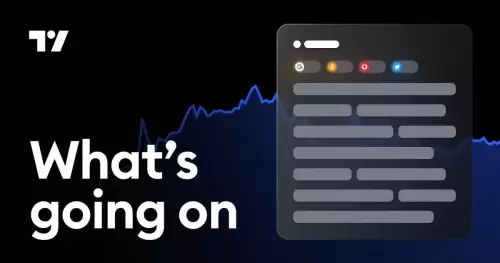 |
|
 |
|
 |
|
 |
|
 |
|
 |
|
 |
|
 |
|
 |
|
 |
|
 |
|
 |
|
 |
|
 |
|
 |
|
In the days gone by, Real World Asset (RWA) tokenization was just coming into the limelight. Really, people would talk upon it at various panels and meetings
In the days gone by, Real World Asset (RWA) tokenization was just coming into the limelight. Really, people would talk upon it at various panels and meetings, but very rarely did the thing materialize. Legal speculation, heavy infrastructure, and fragmented interpretation of compliance discouraged its large-scale executions.
The promise was major: to extend real estate, commodities, and traditional securities into programmable digital tokens that move from one blockchain to another just as easily as native coins.
Real World Asset: An Age New in Institutional-Grade Tokenization
Preparatory to 2025, much has changed. An underbelly of platforms evolved quietly and slowly on the technological and regulatory planes. What used to be cookbook theory is currently witnessing a development into billion-dollar real-estate portfolios, tokenized commodities, and regulated money-market instruments—all on the blockchain.
Institutional engagement has been identified as a key driver of this transition. Tokenization was never the difficult part; making it work inside global financial structures was. And today, we see large financial institutions not just investing in the concept, but also actively developing compliance infrastructure for it.
Real-World Assets and Regulatory Clarity
A prominent example is MultiBank Group (MBG), which, along with Dubai-based developer MAG and blockchain infrastructure provider Mavryk, has announced a multi-billion-dollar tokenized real estate endeavor. This is not a hypothetical or a test case; it is a $3 billion portfolio of high-end homes situated in one of the world’s most competitive luxury marketplaces.
The significance rests not merely in the deal’s magnitude, but in the regulatory certainty that underpins it. MBG has a VARA license, one of the most stringent virtual asset regimes in the Middle East, and is already operating in 17 nations worldwide. With such multi-layered compliance, MBG is one of the few organizations integrating traditional banking with tokenized innovation on a large scale.
T-RIZE and the Tokenization of Primary Development
Montreal-based T-RIZE is at the forefront of making building projects on-chain securities and thereby helping establish this new precedent. Tokenization may hold the key to grassroots capital generation in Project Champfleury, a $300 million, 960-unit Québec residential development.
T-RIZE is an asset digitizer company that instead of selling construction as a compliant financial instrument. Ambient Capital offers an SEC-registered Alternative Trading System infrastructure to link every ERC-3643 security token to a regulated secondary market, hence making asset access easier for institutional and authorized investors, meanwhile, maintaining protections.
T-RIZE converts real estate development into a composable finance layer that is fully transparent.
Redesigning real-time capital stack raising, management, and trading is the goal, not placing a building on-chain.
Specialized Networks are Redefining Infrastructure
Other platforms are challenging the boundaries differently. In Canada, a construction-focused initiative is turning residential projects into digital assets, thus bridging primary capital markets with blockchain technology. At the same time, new purpose-built networks such as Quai and Plume are designed to boost performance and composability by means of varied approaches to custody, throughput, and asset diversity. Quai’s integration of tokenized Treasury markets with high-speed PoW consensus demonstrates that even traditional asset classes, such as cash equivalents, may find a home in this new architecture.
Legacy Players Signal Long-Term Adoption
What makes these events intriguing is not simply the individual headlines, but the broader confluence of policy, infrastructure, and demand. Securitize, an industry veteran, continues to push enterprise adoption as a regulated transfer agent. IThis recent partnership with BlackRock demonstrates that tokenization is no longer just a technology experiment; it is increasingly being embedded within the world’s leading asset managers’ operations.
Scaling Sustainably: What Will Matter Most in 2025
However, the path ahead remains rough. Once successful, secondary concerns of market liquidity, on-chain transparency, and cross-border compliance will dominate discourse. Entities deemed successful will go far beyond token launches to offer actual value by way of institutional-grade tooling, governance, and access. MBG’s case is particularly interesting here—not because it claims to be disruptive—but because it really operates within global banking standards while quietly extending its influence into the tokenized ecosystem.
Conclusion: Beyond the Buzzwords
In conclusion, the year 2025 marks a significant milestone. Tokenization is now about showing its capacity to develop, adapt, and survive rather than proving its viability. Should you be watching regulatory documents, third-party audits, and direct investor access, not news or hype cycles.
These symptoms point to an aging sector—the platforms that acknowledge this will be the ones that endure.
Disclaimer:info@kdj.com
The information provided is not trading advice. kdj.com does not assume any responsibility for any investments made based on the information provided in this article. Cryptocurrencies are highly volatile and it is highly recommended that you invest with caution after thorough research!
If you believe that the content used on this website infringes your copyright, please contact us immediately (info@kdj.com) and we will delete it promptly.
-

-

-

-

- Veteran wave technician “BigMike7335” (@Michael_EWpro) argues that the XRP token has just completed a textbook reversal on the daily chart.
- May 14, 2025 at 08:50 pm
- The annotated Bitstamp daily shows price clawing back to $2.5717, a 21% gain over the last seven sessions that decisively lifts the token through a six-month neckline sitting fractionally above $2.40.
-

-

-

-

-



















![[Market 5.13] BTC continues to play music and dance? #btc #ETH #sol #doge [Market 5.13] BTC continues to play music and dance? #btc #ETH #sol #doge](/uploads/2025/05/14/cryptocurrencies-news/videos/market-btc-continues-play-music-dance-btc-eth-sol-doge/image_500_375.webp)




![[Ronnie Trading Guide]-2025.5.14-Notice: Bitcoin will test the previous high soon~ wait and see~ [Ronnie Trading Guide]-2025.5.14-Notice: Bitcoin will test the previous high soon~ wait and see~](/uploads/2025/05/14/cryptocurrencies-news/videos/ronnie-trading-guidenotice-bitcoin-test-previous-wait/image_500_375.webp)




































